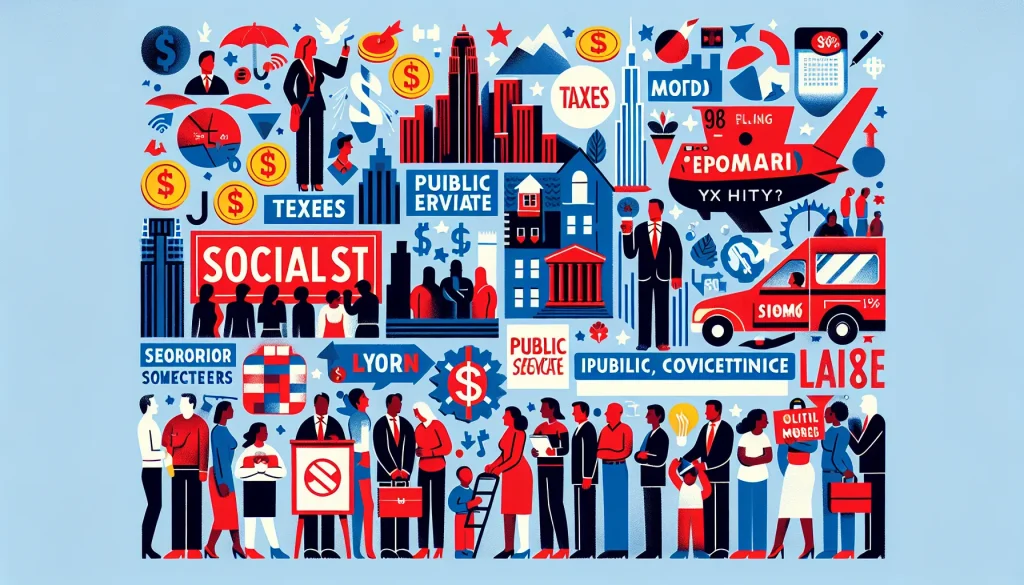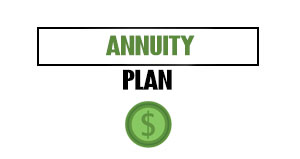I’m Taylor Sohns, CEO of LifeGoal Wealth Advisors, a Certified Investment Management Analyst and Certified Financial Planner. I live and work in New York, and I care deeply about how policy choices shape daily life, business activity, and long-term wealth. Polls now put the odds high that New York City could elect a self-proclaimed socialist as mayor. This isn’t a label debate. It is a policy debate. The ideas on the table could change taxes, real estate, public services, and the city’s competitive position. I want to lay out the proposals, how they might work in practice, and the ripple effects for families, workers, and investors.
“There is a 93% chance New York City elects a self proclaimed socialist for mayor.”
Table of Contents
ToggleWhat’s Being Proposed
The expected platform includes a new 2% wealth tax to fund city-owned grocery stores, free buses and childcare for all paid for by a 4% corporate tax hike, and expanded rent control with landlords absorbing more of the cost burden. These are large moves. They aim to reshape who pays, how services get delivered, and what housing looks like. The question I keep asking is simple: would these policies make New York fairer and stronger, or would they push out the very people and businesses that keep the city running?
- New 2% wealth tax to pay for city-run grocery stores
- 4% corporate tax increase to fund free buses and childcare
- Expanded rent control and heavier costs borne by landlords
- Top combined tax rates could reach about 54% for high earners
- Risk of businesses and affluent taxpayers leaving the city
View this post on Instagram
Taxes Near the Breaking Point
New York is already a high-tax state. New York City adds another layer on top. Add a 2% wealth tax, and top effective rates could edge near 54% for high earners. That number alone will turn heads. High tax burdens do not exist in a vacuum. They influence where people choose to live and where companies choose to plant their headquarters.
I’ve watched how families hustle to cover rising costs. Property taxes climb. Fees grow. Every day goods feel more expensive. When you overlay a tax system that takes more from fewer people, you concentrate risk. If those payers leave, the revenue base thins out.
Affluent households also tend to hire nannies, cleaners, contractors, and drivers. They eat out, attend shows, and spend on local services. The tax debate is not just about the top 1% versus everyone else. It’s about the entire spending chain across neighborhoods.
“The top 10% of earners drive 50% of consumer spending.”
Estimates vary by data source, but the pattern is consistent: a small share of earners supports a large share of spending. If they exit, Midtown doesn’t just lose a few diners. Corner stores, restaurants, and service providers across boroughs feel it too.
City-Owned Grocery Stores: Helpful or Costly?
The idea of city-run grocery stores comes from a real problem. Many neighborhoods lack fresh, affordable food options. Families travel far to get the basics. I get the impulse to step in. But the track record of government-run businesses is mixed at best. The risk is that costs are higher, service is slower, and accountability gets lost. The dollars to fund such a system don’t appear out of thin air. They come from higher taxes on a group that is already heavily taxed.
“Name one government run business that’s ever worked.”
It’s a blunt question, and yes, there are examples of public services that operate well. But retail is tough. Inventory turns, shrinkage, logistics, real estate, and staffing make it a razor-thin margin business. For a city store to work, it must do what private grocers sometimes struggle to do: deliver quality food at low prices with strong service. That requires more than funding. It requires intense operational discipline and zero tolerance for waste.
There are other ways to attack food deserts that keep a competitive structure. You can offer targeted subsidies to private grocers that agree to serve certain areas for a set period with measurable targets. You can adjust zoning or provide tax credits that help grocers manage rent and build-outs. You can help smaller bodegas expand fresh offerings through grants tied to inventory and refrigeration upgrades. Those tools can boost access without putting City Hall in the grocery business.
Free Buses and Childcare Through a Corporate Tax Hike
Public transit and childcare matter. Buses keep the city running. Childcare keeps parents working. Free access would help many lower and middle-income households. But raising corporate taxes another 4% creates a trade-off: relief for some, pressure on others. If the best-paying firms decide the math no longer works, they can move. It’s easier for a headquarters or a trading desk to shift states than it used to be. Technology and hybrid work make those decisions less painful.
We’ve seen high-profile relocations before. Tesla left California for Texas. Financial firms rebalanced headcount to Florida and other states. The New York economy can absorb some movement; that’s the strength of a huge city. But if the policy message is “we’ll keep raising the bill,” then the patient may eventually stop paying.
“He’s practically begging JPMorgan to follow Tesla’s lead who left high tax California for Texas.”
That line captures the concern. If even a few anchor employers scale down, the tax base shrinks. The city then faces a choice: cut services or raise taxes again. Neither is popular, and both hurt growth.
Rent Control and the Housing Squeeze
Rent is a real pain point. I hear from renters who are stretched thin. Rent control sounds like a fix. But if landlords can’t raise rents to cover higher taxes, repairs, and insurance, many will cut investment or exit. That means fewer upgrades, fewer new units, and more pressure on the housing stock we have. Over time, scarcity wins. The city ends up with older buildings, longer waitlists, and more tension.
“Your taxes go up, but your rent can’t. Expect a full blown real estate purge.”
That’s a strong phrase, and I hope it doesn’t play out that way. But incentives matter. If the numbers don’t work, owners sell or walk away. Developers halt projects. Lenders tighten. The result is a housing market with less supply and more friction. The goal should be more units, faster permitting, and a stable path to earn a fair return in exchange for safe, quality housing.
There are balanced approaches. You can streamline approvals for multifamily projects that include a set share of affordable units. You can offer time-limited tax abatements tied to building upgrades, energy efficiency, or accessibility improvements. You can fund vouchers that help renters directly without distorting the entire market. The aim is to help renters today without collapsing tomorrow’s supply.
What Happens If High Earners Leave
I don’t build my opinions on fear. I build them on behavior. High earners and large employers have options. If tax and regulatory pressure keeps rising, they choose somewhere else. That move doesn’t just lower tax receipts. It cuts discretionary spending across the city. Restaurants, music venues, theaters, retail, and service jobs take the hit. City revenue falls again, and the cycle gets harsher.
People ask whether the wealthy will really go. Many already have moved part-time or full-time. Some shift income sources to lower-tax places. Others keep a smaller footprint here and spend less. It doesn’t take a mass exodus to change the math. A modest share can move the needle on revenue and spending.
Public Good Without Private Flight
I want New York to work for bus riders, parents, renters, workers, and small business owners. You can improve access to services without chasing away the people and firms who fund them. That means setting goals and testing the most efficient path to reach them. It means using time-limited pilots, measuring outcomes, and adjusting fast if results miss the mark.
On transit, target free or reduced fares by income or zip code first. Prove it lifts ridership and job access. On childcare, fund capacity in neighborhoods with long waitlists and tie payments to quality metrics and staff retention. On groceries, support private operators who commit to underserved areas with clear performance rules. On housing, increase supply and protect tenants from abuse without removing the incentive to build and maintain apartments.
Advice for Residents and Investors
You can’t control elections, but you can control how you respond. Residents should stress-test their budgets under different tax and cost scenarios. Run a simple exercise: if my taxes rose by X and rent or mortgage by Y, what changes would I make? Do I have a buffer? Do I need to prioritize debt payoff or increase cash reserves?
Homeowners and landlords should plan for policy shifts: model rent caps, higher maintenance costs, and potential vacancies. Consider legal strategies that exist today, such as like-kind exchanges under current federal rules, or investing in areas with more stable policies. Speak with a qualified tax professional before making moves. The right structure can reduce risk without taking unnecessary bets.
Business owners need a location and tax plan. Review where your employees live, the value of proximity to clients, and the cost of doing business across jurisdictions. Build flexibility into leases. Maintain options for hybrid work. If policy changes increase costs, you want time and leverage to adjust.
The Real Question: Will These Policies Work?
We should judge ideas by results. Will city-owned grocery stores lower food costs and improve access without draining budgets? Will free buses and childcare funded by higher corporate taxes improve outcomes without pushing employers away? Will stricter rent control protect renters without choking supply? These are testable questions. They require honest measurement and a willingness to course-correct.
My view is firm but fair. New York thrives when it welcomes risk-takers, creators, and workers across income levels. It struggles when policy becomes punitive and fails to account for incentives. It shines when it combines compassion with sound math. That balance is hard, but it’s not impossible.
Why I’m Speaking Up
I love this city. I want it to work for my family and for yours. My job is to analyze trade-offs and help people navigate money choices under uncertainty. I see the risks here. I also see a path that protects services without smothering growth. The stakes are real, not abstract. If you tax and regulate the city’s engine out of existence, you don’t end up with a fairer system. You end up with fewer jobs, fewer opportunities, and shrinking revenue for public goods.
That is not a scare line. It is a lesson from many places that have been pushed too far. Balance is the goal. Encourage investment. Help those who need it. Keep the signals clear that New York is open to builders, employers, and families who want to plant roots.
In the months ahead, I’ll keep watching the proposals and the data. If the new mayor follows through, we will see early signs in hiring, leasing, and spending. That’s the time to adjust, not years later.
If New York achieves better transit access, more childcare seats, and safer housing while holding onto employers and investors, I’ll applaud it. If we push policies that sound generous but chase away the people who fund them, we’ll pay for it twice. Let’s choose the smarter path now.

















